8/2/2016
Previous posts in this series can be found here and here.
Seeing that this table will be one of the major projects for the year and the first significant piece of furniture to emerge from my current shop, I decided to first build a prototype. I have never done this before, but can already see that it is a vital step in the right direction. Just to remind you of the background, this is a table for friends of ours the Burmeister-Nel family. I am building the table as payment for a whole stack of excellent Scott’s Pine beams.
The design of this table has evolved significantly over the past 7 months. So far the evolution took place in the realm of my personal cerebral SketchUp. The prototype is the first tangible manifestation of the mentioned neurophysiological exercise. At this stage it is primarily inspired by George Nakashima and Japanese joinery ideas. The feral nature of the African hard woods we chose for this project really lends itself to the Nakashima design ideology.
A second prominent influence in this design effort would be the ideas and techniques used by pre-industrialisation artisans as explored by George R. Walker and Jim Tolpin in their seminal work “By Hand & Eye”. I tried to use those techniques to strike the sweet spot in terms of proportion between various parts and their relation to one another. What I found was that working with simple whole number ratios makes it very easy to shrink and expand the design for the purpose of the prototype.
The starting point was the size of the top, which ended up being a 1:2 rectangle. The hight of the table that worked well was 2/3 of the width, which meant that the whole piece would fit in a 2:3:6 cuboid.
Here you can see my initial sketches to work out appropriate proportions. The side view were divided into 5 equal parts and I placed the leg structures on a 1:3:1 rhythm. The angle of the leg structures were also derived using a similar approach.
I used some of the mentioned Scott’s Pine to build the prototype as it is easy to work with.
15/2/2016
I made the effort to plane down the top to the exact thickness relative to the size of the model.
The solid trapezoid shaped leg piece is twice as thick as the top and all the other parts are related to the thickness of the top.
The heavy beam at the bottom that connects the leg pieces will be attached to the trapezoid shaped piece with a through tenon, which will receive a wedge similar to the one pictured.
The opposite leg piece will consist of four spindles ascending at the same angle as the sides of the trapezoid piece. These are not the correct size as it was impossible to produced such small spindles, so the wire had to do. The actual spindles will be slightly thicker and have the bamboo type appearance similar to spindles used in some Windsor chairs.
Here are a couple of photos illustrating the type of design I have in mind for the spindles. I refer to the spindles in the back of the Windsor chair rather than the legs. I add these pictures in response to Stefan’s valid feedback.
I would like to invite everyone to give input on the design. Please feel free to rip into it, if I feel too aggrieved by the criticism I can simply ignore it. Hopefully though we can fine tune it to be better. At this stage I am fairly happy with it, but am quite sure it can be improved a bit.






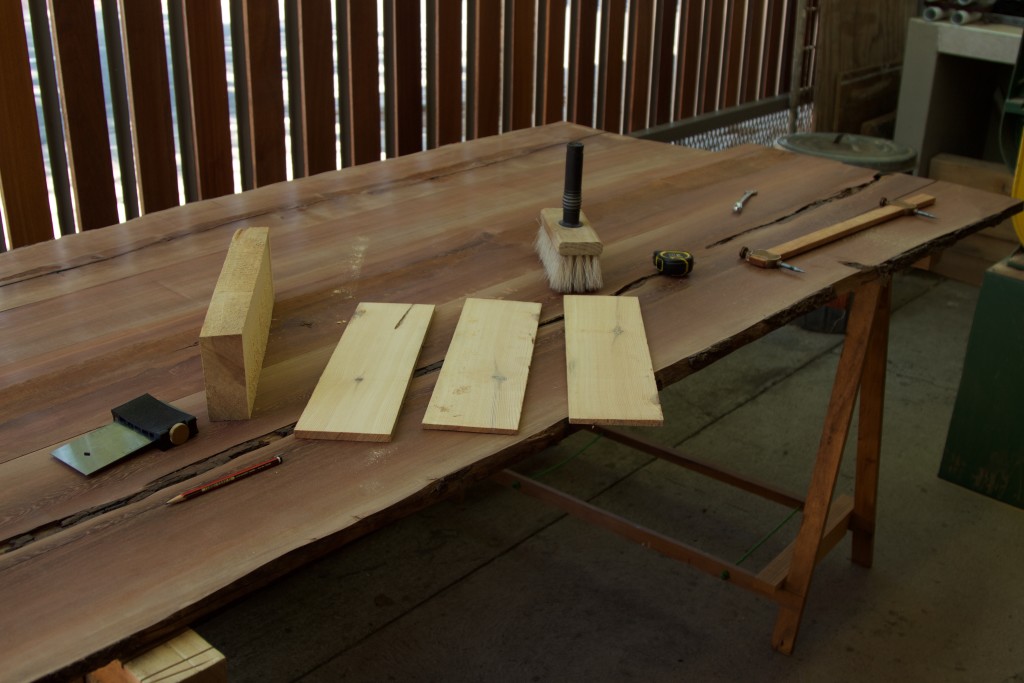
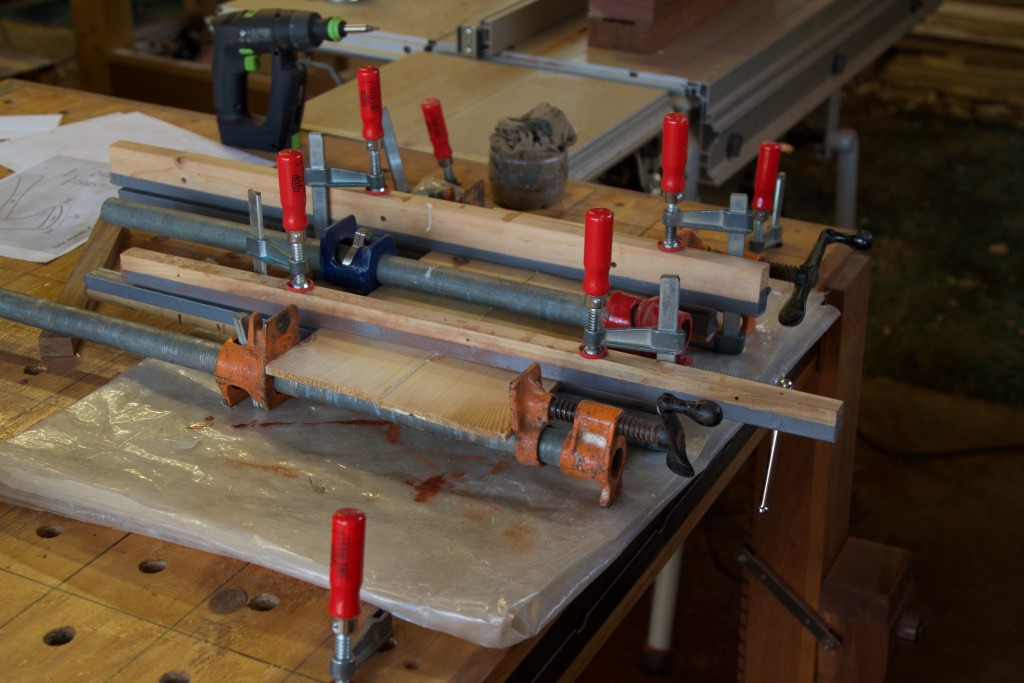
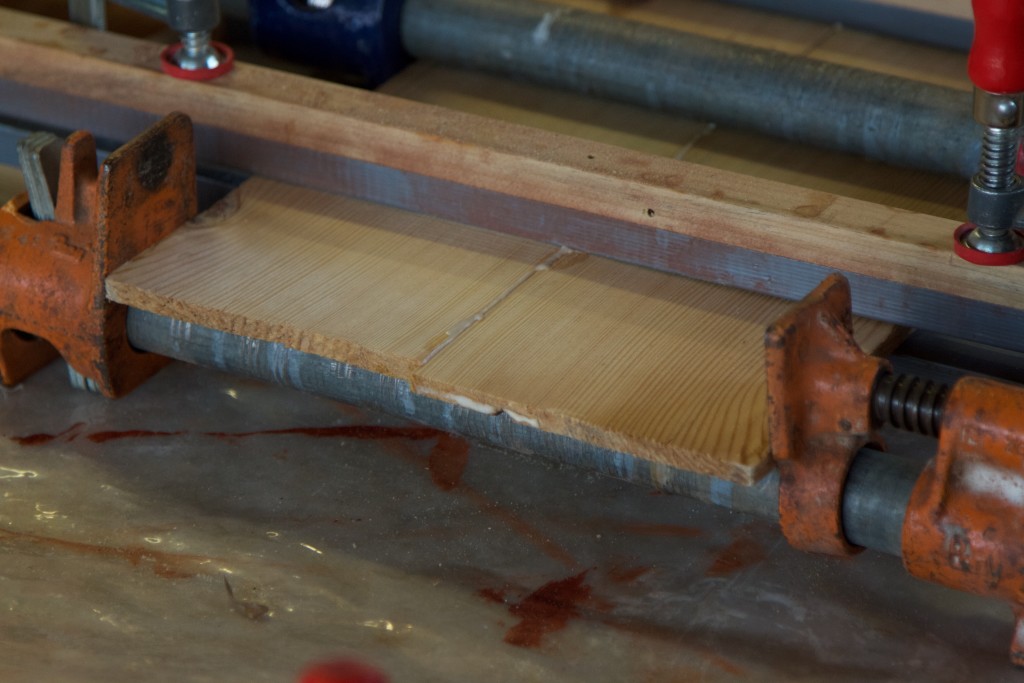
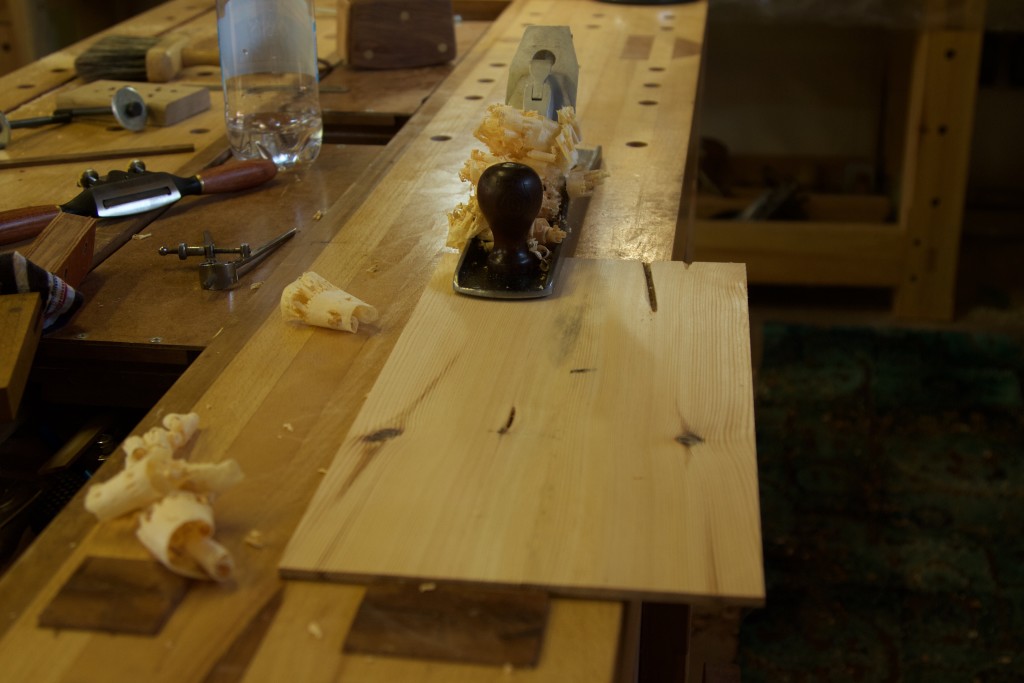

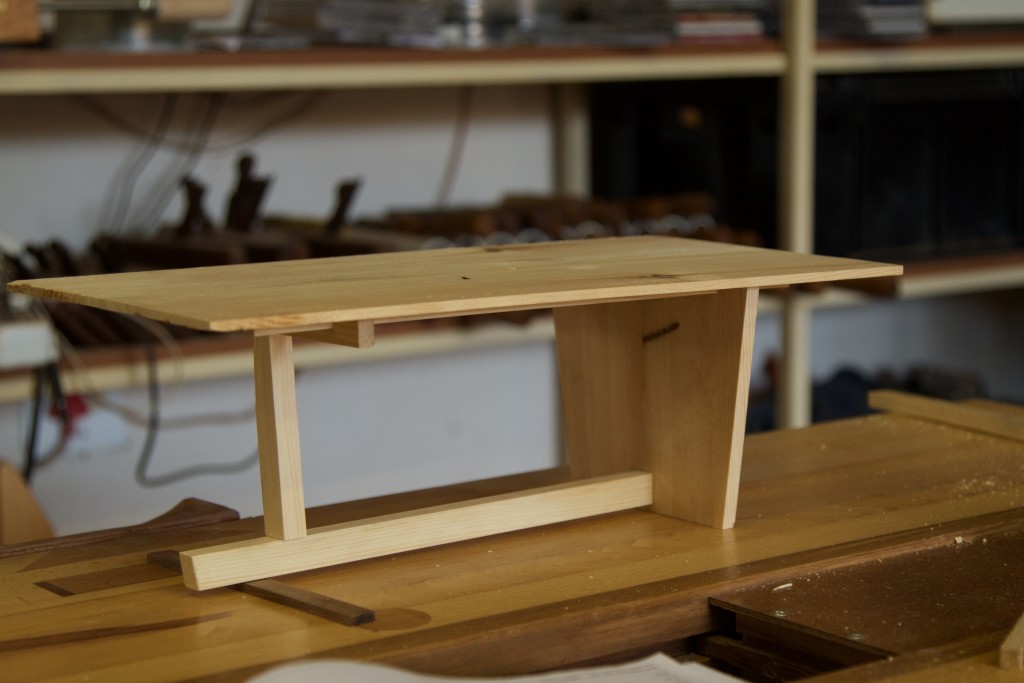
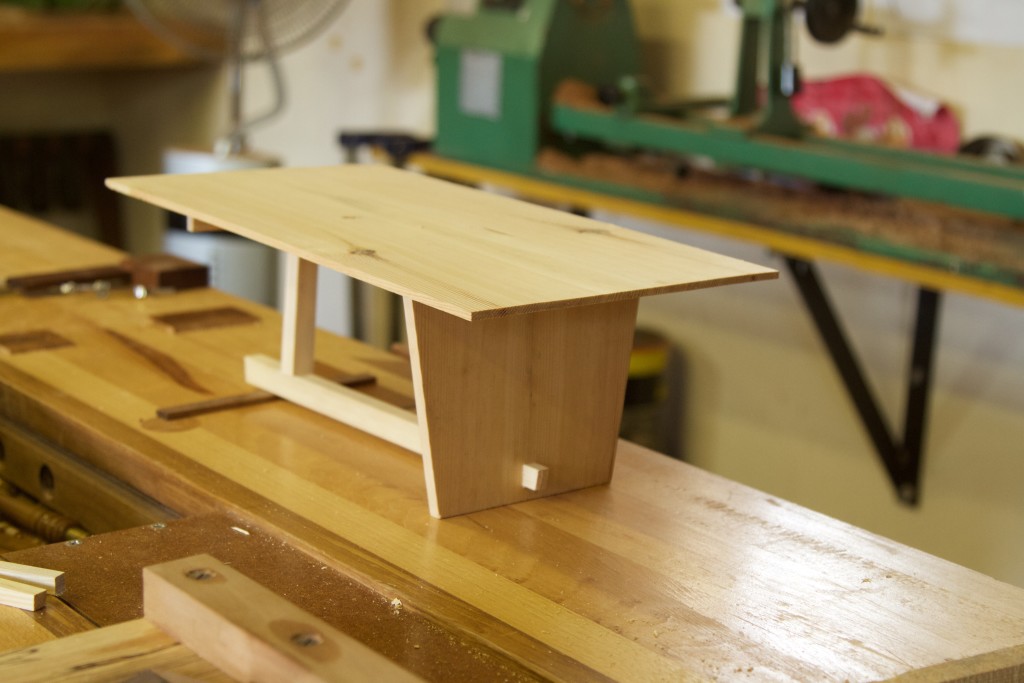

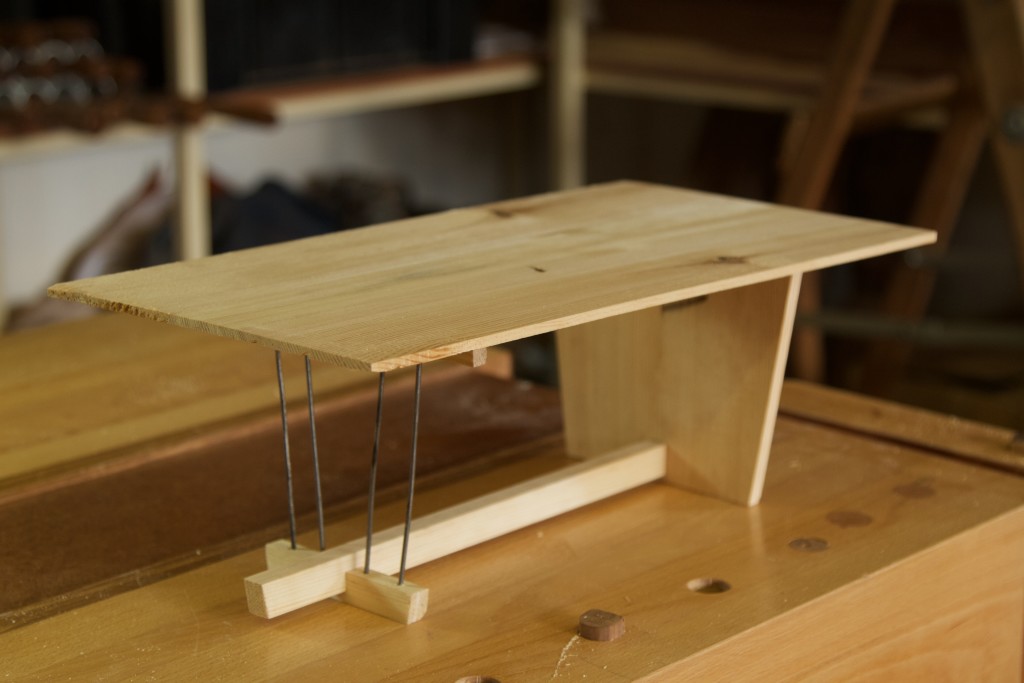
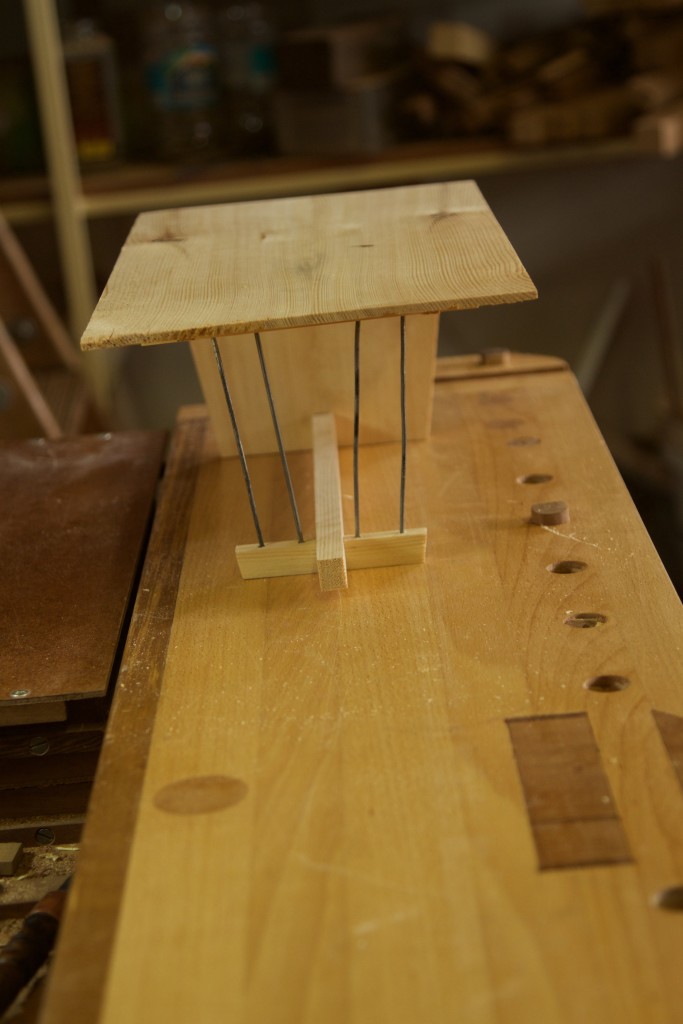


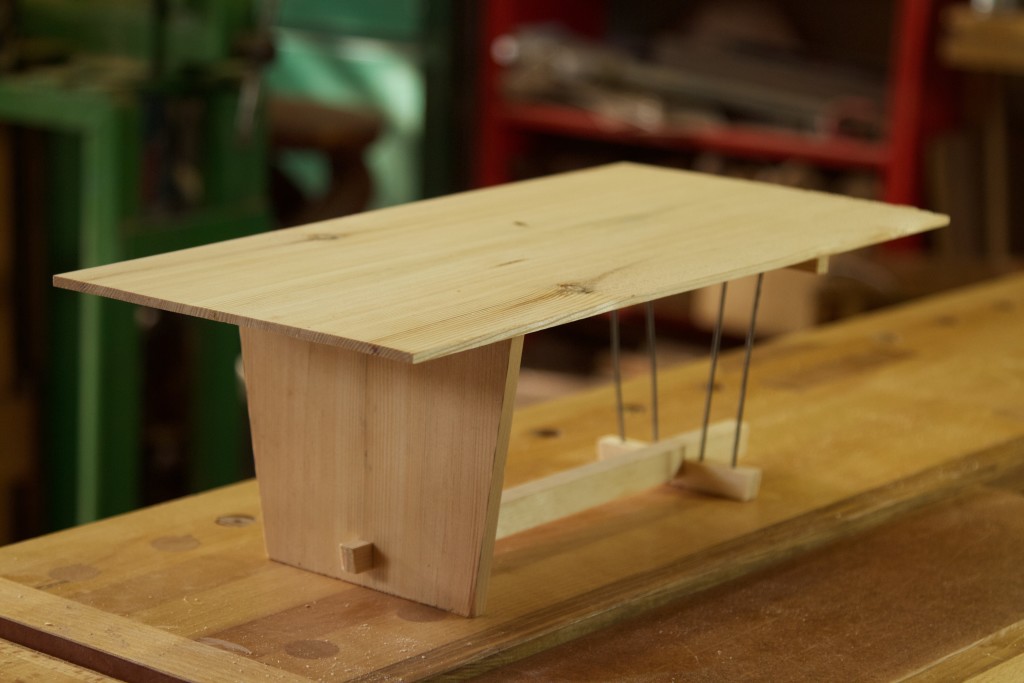
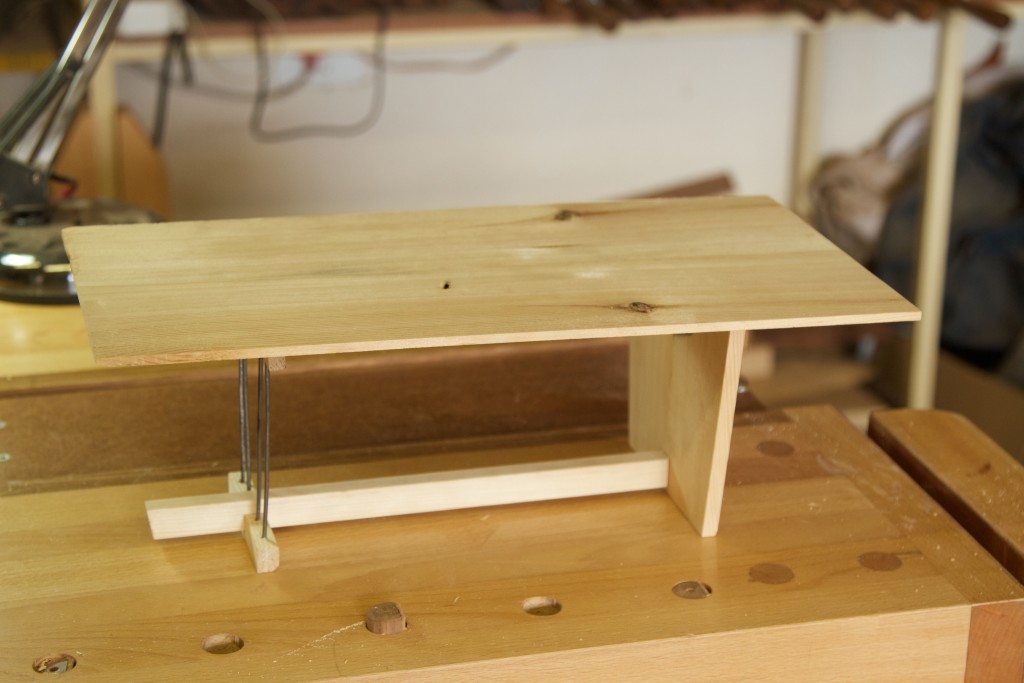



Hi Gerhard,
I like your design. It seems to be well thought through.
The only thing I would like to remark is the design of the legs.
If they would be in the bamboo style I could imaging that they fit well. I’m unsure about windsor style legs. Perhaps straight legs or somehow a cigar form will look good too.
Cheers,
Stefan
Hi Stefan
Thank you very much for the input, it is much appreciated. I should have explained myself a bit better regarding the spindles. What I mean is the appearance of the delicate spindles sometimes used in the back of Windsor chairs rather than the legs, which I agree will not work. I will add two photos to the post to illustrated what I mean.
Thanks again.
Gerhard
With comments on the internet you never know if the commenter is a master craftsman or a loonie. So let me quickly start out with saying that I am not a master craftsman 😉
Having said that, do you know where the piece will be living in the future? I think in particular for such an asymmetric piece that could give valuable input for the design.
Hi Mariano
It is very nice to hear from you again. You make a very good point (that I haven’t considered), I should discuss with the future owners what exactly they had in mind for the piece. Once I have an answer I will add it to the post, because I would love to hear what you think.
Have a wonderful day.
Gerhard
Interesting design, i dont think i ever saw something similar. Great idea to use a mock up model, it sure helps visualize it. Agree with Mariano, knowing where it would fit and in which “decor” would be an asset. And at the end of the day, even if you and all of us “loonie” like it, it HAS to be like by the customer better.
I think you are on the right track.
“Uncle” Bob
Thank you Bob, I really value your insights. I have arranged with the future owners to sit down and have a G&T at their house one evening while mulling over the potential sites for the table and how it might have an influence on the design. Can’t think of a better reason to have a G&T, (apart from the reports of the outbreak of a dangerous strain of Malaria in the North of the country, that is)
Have a wonderful day.
Gerhard
Gerhard,
I truly enjoy this design and I’m excited to see the final work, whenever it may come.
One quick note on the legs (since you asked!); having seen a photo of the prototype before reading the post, I actually think the use of metal spindles would complement the form quite well. I must admit, I was disappointed when you stated that you were planning on going with wood! The thickness of the metal bar would compliment the asymmetry wonderfully, and a metal alloy that gains a nice patina over time would add some visual interest as well (not that it needs any).
That said, whatever you choose to go with, I’m positive it will look wonderful.
-Sean
Hi Sean
Thank you very much for your interesting though. I also thought about it for a little while, but I guess the best would be to find a few bits metal piping and test the look once the other pieces around it is already made. I will also discuss with the clients and see what they think. I eventually decided on the wood, because I can shape that to mimic bamboo, which I thought could fit nicely into the Japanese theme (in terms of joinery and Nakashima) of the design.
Thanks again and please stay in touch.
Gerhard